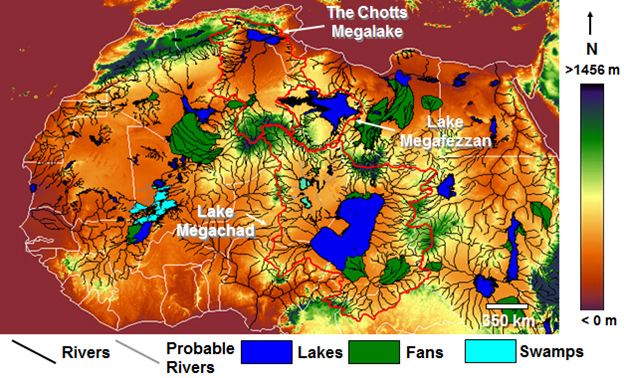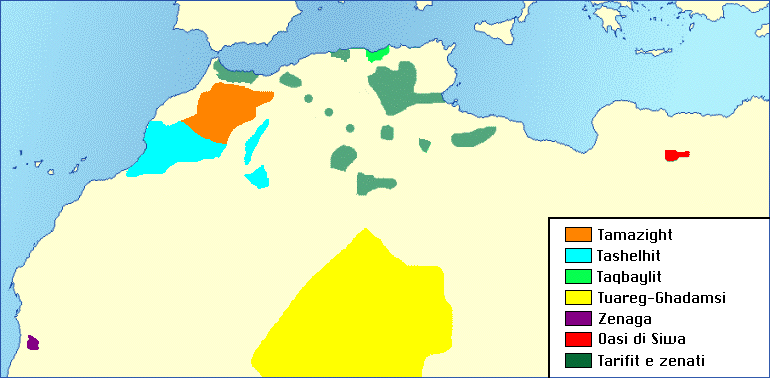Bob Idjennaden
Idjennaden, Bob (m)
Bob Idjennaden is a Belgian author now living in Ireland, working in the field of business organisation.  His private interests include the study of North African prehistory and history. This has led to the writing of a series of short books, sometimes with co-authors, which deal with specific aspects of North African history and culture.
His private interests include the study of North African prehistory and history. This has led to the writing of a series of short books, sometimes with co-authors, which deal with specific aspects of North African history and culture.
*[An article on the tribes of the Roman province of Africa Proconsularis, centred around modern Tunisia should be read(b) in conjunction with Idjennaden’s work.]*
I am not aware of Idjennaden touching on the subject of Atlantis, in spite of the fact that Plato clearly states that the Atlanteans controlled Libya as far as Egypt. Nevertheless, many of the books deal with specific matters related to different Atlantis theories, such as the Sea Peoples[1195] , the Canary Islands and Berbers.
(a) https://www.amazon.co.uk/Bob-Idjennaden/e/B0079G2BM8
(b) https://melitainsula.blogspot.ie/2010/10/indigenous-tribes-of-africa.html
Sahara Desert
The Sahara Desert and in particular its northern regions have attracted its share of attention from Atlantis investigators. However unlikely it may appear as a possible location for Atlantis it must be kept in mind that the Sahara of prehistory was very different from what we see today. Not only was it wetter at various periods in the past, but also there is clear evidence for the existence of a large inland sea extending across the borders of modern Algeria and Tunisia. This evidence is in the form of the chotts or salt flats in both countries. This proposed sea is considered by some to have been the Lake Tritonis referred to by classical writers. It is suggested that some form of tectonic/seismic activity, common in the region, was responsible for isolating this body of seawater from the Mediterranean and eventually turning it into the salt flats we see today.
An even more extensive inland sea, further south, was proposed by Ali Bey el Abbassi and based on his theory a map was published in 1802 which can be viewed online(c).
More recently, Riaan Booysen has published an illustrated paper on the ancient inland Saharan seas as indicated on the 16th-century maps of Mercator and Ortelius(i). King’s College London runs The Sahara Megalakes Project which studies the Megalakes and the Saharan Palaeoclimate record(m).>>The largest of these was possibly Lake Chad which at its most extensive is estimated to have been greater than the combined Great Lakes of North America.<<
 A 2013 report in New Scientist magazine(d) revealed that 100,000 years ago the Sahara had been home to three large rivers that flowed northward, which probably provided migration routes for our ancestors. Depending on how long the African Humid Period lasted, this article may be read in conjunction with George Sarantitis‘ theory regarding the Voyage of Hanno that he claims took place in the interior of Africa.
A 2013 report in New Scientist magazine(d) revealed that 100,000 years ago the Sahara had been home to three large rivers that flowed northward, which probably provided migration routes for our ancestors. Depending on how long the African Humid Period lasted, this article may be read in conjunction with George Sarantitis‘ theory regarding the Voyage of Hanno that he claims took place in the interior of Africa.
Other studies(h) have shown the previous existence of a huge river system in the Western Sahara, which flowed into the Atlantic on the Mauritanian coast.
An article in the Sept. 2008 edition of National Geographic pointed out that the Saharan climate has been similar for the past 70,000 years except for a period beginning 12,000 years ago when a number of factors combined to alter this fact. A northerly shift by seasonal monsoons brought additional rain to an area the size of the contiguous USA. This period of a greener Sahara lasted until around 4,500 years ago.
More recent studies claim that “there’s geologic evidence from ocean sediments that these orbitally-paced Green Sahara events occur as far back as the Miocene epoch (23 million to 5 million years ago), including during periods when atmospheric carbon dioxide was similar to and possibly higher than today’s levels. So, a future Green Sahara event is still highly likely in the distant future.” (p)
>>However, in the Sept. 2024 edition of National Geographic an article Peter Gwin notes that “the Sahara hasn’t always been a desert. In fact, it transforms from desert to lush savanna about every 21,000 years. A quirk in Earth’s planetary mechanics periodically causes its axis to tilt slightly, increasing the amount of radiation directed to the Northern Hemisphere, which in turns pulls Africa’s seasonal rains northward.”<<
Henri Lhote contributed an article to Reader’s Digest‘s, The World’s Last Mysteries [1083], regarding the ‘green’ Sahara that existed prior to 2500 BC. Two German climatologists Rudolph Kuper and Stefan Kröpelin have estimated that this last greening of the Sahara began around 8500 BC and ended sometime between 3500 BC and 1500 BC(r)(u) .
A team from the Potsdam Institute for Climate Research led by Professor Martin Claussen published a number of papers in the late 1990s following their production of a successful computer simulation of prehistorical North Africa(v). According to a report on the climateark website (now offline), one of their conclusions was “that the change to desert climate in the Sahara was triggered by changes in the Earth’s orbit and the tilt of Earth’s axis.”
Some, such as Kröpelin, have suggested a connection between the latest aridification of the Sahara and the migration of settlers to the Nile Valley(w), where, coincidentally, the ancient Egypt we know about was founded around 3100 BC.
Others have endeavoured to link the last drying of the Sahara with the destruction of Atlantis!
More recently, human activity has been blamed as a major contributory factor for the desertification of the Sahara region less than 10,000 years ago.(n)
Related to the above is a recent study of sediments off the west coast of Africa, which resulted in the discovery of what was “primarily a new “beat,” in which the Sahara vacillated between wet and dry climates every 20,000 years, in sync with the region’s monsoon activity and the periodic tilting of the Earth.” (o)
In Mauritania, a huge natural feature known as the Richat Structure has been claimed as the remnant of Atlantis by George Sarantitis [1470] as well as by Alexander & Rosen and others. >>However, Ulf Richter has pointed out that it is too wide (35km), too elevated (400metres) and too far from the sea (500km) to be seriously considered as the location of Atlantis. Apart from which, a scientific study of the Structure reveals it to be a natural feature(x).<<
In 1868, it was proposed by D.A. Godron, the French botanist, that the Sahara was the location of Atlantis. In 2003, the non-existent archaeologist Dr.Carla Sage announced that she was hoping to lead an international expedition to the Sahara in search of Atlantis. Her contention was that “Atlantis was the capital of a vast North African empire with ports on the Gulf of Sidra”. This report is now confirmed to have been a hoax! I am indebted to Stel Pavlou for uncovering the origin of this story(e).
The idea of an African Atlantis was highlighted in 2021 with the publication of Atletenu [1821], in which the author, Diego Ratti, identified the Hyksos as Atlanteans with their capital at Avaris in the eastern Nile Delta. At the other end of North Africa, the chotts of Tunisia and Algeria were nominated by Holden Zhang as the location of Atlantis in a YouTube clip(q).
Gary Gilligan, the well-known catastrophist, wrote a thought-provoking article(k) on the origin of the Saharan sands, which he claims are extraterrestrial in origin and expands on the idea in his 2016 book Extraterrestrial Sands [1365]. A March 2024 report(t). on the BBC website has revealed that a particular type of sand dune has now been dated. They are known as ‘star’ or ‘pyramid’ dunes – “are named after their distinctive shapes and reach hundreds of metres in height.” They are found in Africa, Asia and North America, as well as on Mars – but experts had never before been able to put a date on when they were formed. Now scientists have discovered that a dune called Lala Lallia in Morocco formed 13,000 years ago.”
David Mattingly, an archaeologist at Leicester University has found that an ancient people known as the Garamantes had an extensive civilisation in the Sahara(l). He has evidence of at least three cities and twenty other settlements. The Garamantes reached their peak around 100 BC and then gradually diminished in influence as fossil water supplies reduced until in the 7th century AD they were subjected to Islamic domination. Some researchers such as Frank Joseph have identified the Garamantes as being linked with the Sea Peoples. Bob Idjennaden has published short but informative Kindle books about both the Garamantes [1194] and the Sea Peoples [1195], without a suggestion of any connection between the two.
A 2017 article on the Popular Archaeology website told us that “New research investigating the transition of the Sahara from a lush, green landscape 10,000 years ago to the arid conditions found today, suggests that humans may have played an active role in its desertification.” (n).
The discovery of megalithic structures discovered at Nabta Playa (Nabta Lake) in the Egyptian Sahara has provided evidence for the existence of a sophisticated society in that area around 5000 BC. In the same region, near the Dakhleh Oasis, archaeologists have produced data that supports the idea that pre-Pharaonic Egypt had Desert Origins rather than being an importation from Mesopotamia or elsewhere(a).
Nabta Playa is not unique, in fact, the largest megalithic ellipse in the world is to be found at Mzorah, 27 km from Lixus in Morocco(b). It appears that the construction methods employed at both Mezorah and Nabta Playa are both similar to that used in the British Isles. An even more impressive site is Adam’s Calendar in South Africa which has been claimed as 75,000-250,000 years old.
West of Cairo near the border with Libya is the Siwa Oasis, where it has now been demonstrated that “it is in fact home to one of Ancient Egypt’s astounding solar-calendar technologies– the solar equinox alignment between the Timasirayn Temple and the Temple of Amun Oracle in Aghurmi.”(j).
I think we can expect further exciting discoveries in the Sahara leading to a clearer picture of the prehistoric cultures of the region and what connections there are, if any, with Plato’s Atlantis. In the meanwhile in the Eastern Egyptian Desert, Douglas Brewer, a professor of archaeology at the University of Illinois, has discovered over 1,000 examples of rock art, including numerous depictions of boats although the sites, so far undisclosed, are remote from water.
Even more remarkable is the report(e) of March 2015 that a survey of the Messak Settafet escarpment in the central Sahara revealed that there were enough discarded stone tools in the region “to build more than one Great Pyramid for every square kilometre of land on the continent”! Coincidentally, around the same time, it was reported that over a thousand stone tools had been found in the Northern Utah Desert(g). What the Utah discovery lacked in quantity was made up for in quality with the finding of the largest known Haskett point spearhead, measuring around nine inches in length.
(a) Saudi Aramco World (2006, Vol. 57, No.5 p.2-11)
(c) https://web.archive.org/web/20201019061756/http://catalog.afriterra.org/zoomMap.cmd?number=1036
(d) NewScientist.com, 16 September 2013, https://tinyurl.com/mg9vcoz
(e) https://books.google.com/books?id=GvMDAAAAMBAJ&pg=PA46&dq=dr.+carla+sage+archaeologist&hl=en&sa=X&ei=GSENVKiaO9W0yASJgoIY&ved=0CCYQ6AEwAA#v=onepage&q=dr.%20carla%20sage%20archaeologist&f=false
(f) https://www.cam.ac.uk/research/news/saharan-carpet-of-tools-is-the-earliest-known-man-made-landscape
(i) 7. The lakes in the middle of the Sahara desert – Page 8 (archive.org)
(l) See: Archive 3268
(n) https://popular-archaeology.com/issue/winter-2017/article/did-humans-create-the-sahara-desert
(o) https://phys.org/news/2019-01-sahara-swung-lush-conditions-years.html#jCp
(p) https://www.livescience.com/will-sahara-desert-turn-green.html
(q) Revive Eden 3 Convincing Atlantis – YouTube
(r) https://www.smithsonianmag.com/history/uncovering-secrets-of-the-sphinx-5053442/
(s) https://las.illinois.edu/news/2006-09-01/oasis-art-egyptian-desert
(t) Star dune: Scientists solve mystery behind Earth’s largest desert sands – BBC News
(u) Shift From Savannah to Sahara Was Gradual, Research Suggests – The New York Times (nytimes.com)
(x) Eye Of The Sahara or Richat Structure » Geology Science *
Berbers *
The Berbers of North Africa, sometimes referred to as Amazigh, are blond and blue-eyed where they have not interbred with the Arab population.
 They are genetically related to the Saami people of northern Scandinavia according to mtDNA studies(g) published in the American Journal of Human Genetics in 2005. It is frequently mentioned that the Berbers refer to a rich land called Attala situated in the west. The Berbers are probably related to the Guanches of the Canary Islands who were also blond with blue/grey eyes. Although the Spanish virtually wiped out the Guanches, there are still native tall blond blue-eyed individuals to be seen in the Canaries.
They are genetically related to the Saami people of northern Scandinavia according to mtDNA studies(g) published in the American Journal of Human Genetics in 2005. It is frequently mentioned that the Berbers refer to a rich land called Attala situated in the west. The Berbers are probably related to the Guanches of the Canary Islands who were also blond with blue/grey eyes. Although the Spanish virtually wiped out the Guanches, there are still native tall blond blue-eyed individuals to be seen in the Canaries.
Genetic studies in 2009 offered evidence that the first inhabitants of the Canaries were Berbers(a). In 2017, additional investigation offered further confirmation of this relationship, published in a report in the October edition of Current Biology(h) and expanded on in an article on the Ancient Origins website by Alicia McDermott(i).
The Berbers also constructed pyramidal structures as tombs or temples such as that at Madghacen in Algeria(e).
Frederick Dodson designated the Berbers as Atlanteans in chapter 4d of his book Atlantis and the Garden of Eden[0989].
Recently Ulrich Hofmann has offered evidence[161] that the predecessors of the Berbers were the people of Atlantis. He identifies these Atlanteans with the Temehu and Tehenu of ancient Libya, recorded in the ancient inscriptions of Egypt. Emmet Sweeney follows a similar line claiming[700.36] that “if we seek the modern descendants of the Atlanteans, we must search among the Berbers”.
David Eccott, a British advocate of very early pre-Columbian trans-Atlantic contacts, has a paper on Andrew Collins’ website in which among others, he claims that Berber seafarers reached the Americas and that rock art in Utah can be attributed to them(j).
The difficulties attached to tracing ancient ‘Libyans’ are outlined in a paper, What Happened to the Ancient Libyans, by Richard L. Smith (1945- ). This essay can be downloaded as a pdf file(b) and is highly recommended as it gives additional insights into the credibility of many of the classical writers frequently quoted in connection with the Atlantis story.
Following the 2011 fall of the Gaddafi regime in Libya, the Berbers there, who were particularly repressed, have again begun to assert their right to greater cultural expression, considering themselves to be the original Libyans(c). However, a report from Reuters dated 18/10/12(d) tells of the destruction of an 8,000-year-old petroglyph by Islamic extremists in an Amazigh region of Morocco. This is the latest example of efforts by the Islamic Salafists to destroy evidence of pre-Islamic culture.
Bob Idjennaden and Mebarek Taklit have written[1195] of the prominent part played by Berbers in the shifting alliances that constituted the ‘Sea Peoples’, who attacked Egypt at least twice during the 2nd millennium BC.
The possibility of a link between the Berbers and Atlantis has now been extended to include the Richat Structure(k). Although to propose an association of the Berbers with the Richat Structure is not too outlandish, once again there is no attempt to explain why or how anyone would launch an attack from Mauritania on Athens nearly 4000 km away by land (3000 km by sea). The idea is logistical nonsense and completely unsupported by any archaeological evidence!
(a) https://www.sciencedaily.com/releases/2009/10/091021115147.htm
(c)https://www.bbc.co.uk/news/world-africa-16289543
(d) https://gulfnews.com/news/region/morocco/pagan-rock-carving-in-morocco-destroyed-1.1091000
(e) Madghacen 3rd century BC Mausoleum, page 1 (archive.org) *
(f) See: Archive 3608
(g) https://www.ncbi.nlm.nih.gov/pmc/articles/PMC1199377/
(h) https://www.cell.com/current-biology/abstract/S0960-9822(17)31257-5
(j) https://www.andrewcollins.com/page/mysteries/deccott.htm
Garamantes *
The Garamantes, referred to by Herodotus, are generally considered to have been the first Libyan empire. However, attempts to link them to the Atlantis story would appear to be undermined by the fact that they flourished around the middle of the first millennium BC, which would appear to be far too recent to fit any interpretation of Plato’s 9,000 ‘years’, be they solar, lunar or seasonal.
Frank Joseph identifies the Garamantes with the Sea Peoples whom he considers to have been Atlantean refugees. However, the Garamantes are generally accepted as having developed urban centres, such as their former capital, Garama, in what is now southern Libya(a)(b), which is not what you might expect from a maritime culture. Recent (2011) satellite images(c) offer new information on the extent of the Garamantes domain.
In 2000, Professor David Mattingly, an archaeologist at Leicester University, found the Garamantes had at least three big cities and 20 other important settlements in the middle of the world’s largest desert(h).
Further information is available on the Temehu.com website(d), but perhaps the most intriguing theory is that the Garamantes originally came from the Carpatho–Danubian region of eastern Europe sometimes referred to as Dacia. It is suggested that the fair-skinned Berbers of North Africa are the descendants of those European invaders!
Bob Idjennaden, a Belgian living in Ireland, has published a short Kindle book(f) on the Garamantes[1194]. He has also authored a series of Kindle books on various aspects of ancient African history, including one about the Sea Peoples[1195], co-authored with Taklit Mebarek.
A 2023 article has drawn attention to the Libyan necropolises of the Garamantes that can be described as ‘pyramidal’(i), suggesting an Egyptian influence.
(a) Kingdom of the Sands – Archaeology Magazine Archive *
(b) Ancient lakes of the Sahara – Innovations Report (archive.org)
(c) https://www.eurekalert.org/news-releases/503407
(d) https://www.temehu.com/Cities_sites/germa.htm
(e) https://web.archive.org/web/20160329142153/http://www.dacia.org/history/gara_e.html
(f) https://www.amazon.com/Garamantes-Forgotten-Civilisations-Africa-Book-ebook/dp/B007Q239OE
(g) https://archive.aramcoworld.com/issue/200403/libya.s.forgotten.desert.kingdom.htm
(h) the garamantes the blackcivlization in the sahara (archive.org)
(i) https://www.heritagedaily.com/2023/04/the-pyramid-tombs-of-libya/146849


